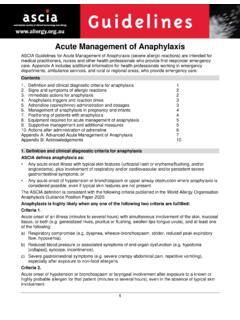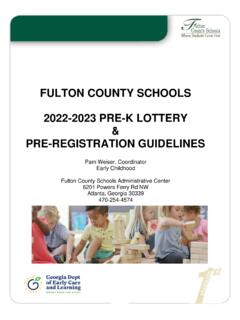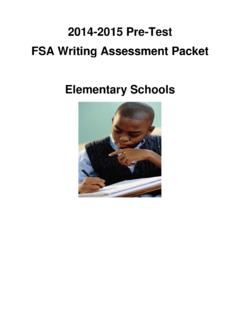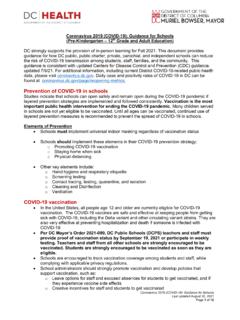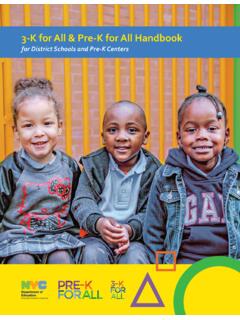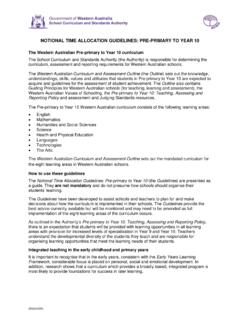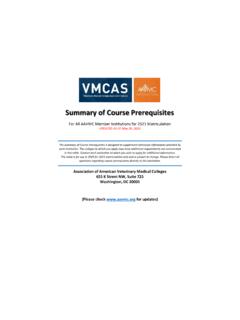Transcription of Risk minimisation strategies table 030315
1 Examples of risk minimisation strategies for schools, preschools and childcare services GENERAL POLICY ISSUES school , preschool or childcare policy communication Consider sending out an information sheet to the parent community on severe allergy and the risk of anaphylaxis. Alert parents to strategies that the school , pre- school or childcare service has in place and the need for their child to not share food and to wash hands after eating. Part-time educators, casual relief teachers These educators need to know the identities of children at risk of anaphylaxis and should be aware of the anaphylaxis management plan at the school , preschool or childcare service.
2 Some casual staff have not received training in anaphylaxis management and emergency treatment. This needs to be considered when a teacher is chosen for a class with a child at risk of anaphylaxis and if this teacher is on playground/yard duty. Suggestions to minimise the risk: Casual staff, who work at school regularly, should be included in anaphylaxis training sessions. Schools should have interim educational tools such as adrenaline autoinjector training devices and access to how to administer videos available to all staff. A free online training course for school and childcare staff is available from the ASCIA website ( ).
3 This course can also be undertaken as refresher training. ASCIA anaphylaxis e-training for childcare is ACECQA approved. Fundraising events/special events/cultural days Consider children with food allergy when planning any fundraisers, cultural days or stalls for fair/fete days, breakfast mornings etc. Notices may need to be sent to parent community discouraging specific food products ( nuts) where appropriate. Where food is for sale, a list of ingredients should be available for each food. INSECT ALLERGY Bees, wasps, stinging ants Have honey bee and wasp nests removed by a professional; Cover garbage receptacles that may attract stinging insects.
4 When purchasing plants for an existing or new garden, consider those less likely to attract bees and wasps. Specify play areas that are lower risk and encourage the student and their peers to play in these areas ( away from garden beds or garbage storage areas). Ensure students wear appropriate clothing and covered shoes when outdoors. Be aware of bees in pools, around water and in grassed or garden areas. Educate children to avoid drinking from open drink containers, particularly those containing sweet drinks that may attract stinging insects.
5 Children with food and insect allergy should not be asked to pick up litter by hand. Where possible, these types of duties should not put them at increased risk of an allergic reaction. Ticks strategies to reduce the risk of tick exposure have been recently published. When walking or working in areas where ticks are endemic: Wear long sleeved shirts and long pants. Tuck pants into long socks and wear a wide brimmed hat. Wear light coloured clothing, which makes it easier to see ticks. Use insect repellent to skin and clothing when walking in areas where ticks are found, particularly ones containing DEET such as Tropical RID , Tropical Aerogard , Bushmans or Picaridin (OFF!)
6 Brush clothes to remove ticks before coming inside. Undress and check for ticks daily, checking carefully on the neck and scalp. Anaphylaxis to tick bites usually occurs when the tick is disturbed, such as with scratching the bite, with attempts at deliberate removal or after application of irritant chemicals such as kerosene. It a tick bite is suspected, the tick should not be removed, but rather killed by use of an ether-containing spray to freeze dry the tick to prevent it from injecting more allergen-containing saliva. Ether-containing aerosol sprays are currently recommended for killing the tick.
7 Aerostart or other ether-containing sprays such as Wart-Off Freeze and similar such as Elastoplast Cold Spray and WartSTOP . It should be noted that Aerostart is not registered for use in humans and that all these products are flammable but there is long-term experience with these products, which have been shown to be very effective in treating those with serious tick allergies. Further information is available from: and LATEX ALLERGY Latex allergy is relatively rare in children, but where such individuals are identified non-latex gloves ( sick bay, first aid kits, canteens, kitchens) should be made available.
8 Consideration may also need to be made for non-latex swimming caps if a school specific swimming cap must be worn ( interschool sports carnivals). Non-latex balloons should also be considered when there is a child enrolled with latex allergy. MEDICATION ALLERGY Severe allergic reactions to medications are relatively rare in young children outside of the hospital setting. Nonetheless, documentation regarding known or suspected medication allergy should be recorded by the school /childcare on enrolment. Any medication administered in the school /childcare setting should be undertaken in accordance with school /childcare and education and children s services department guidelines and with the written permission of parents or guardians.
9 Students in the later years of primary school and secondary school need to be reminded that they should not share medications ( for period pain or headaches). FOOD ALLERGY In the classroom Food rewards Food rewards should be discouraged and non-food rewards encouraged. If food rewards are being used, parents or guardians should be given the opportunity to provide a clearly labelled treat box for their child. Class parties or birthday celebrations Discuss these activities with the parents or guardians of the child with allergy well in advance.
10 Suggest that a notice is sent home to all parents prior to the event, discouraging specific food products ( nuts) where appropriate. Teacher may ask the parent to attend the party as a parent helper . Child at risk of anaphylaxis should not share food brought in by other children. Ideally they should bring their own food. Child can participate in spontaneous birthday celebrations by parents supplying treat box or safe cupcakes stored in the freezer in a labelled sealed container. Cooking/food technology Engage parents or guardians and older children in discussions prior to cooking sessions and activities using food.


